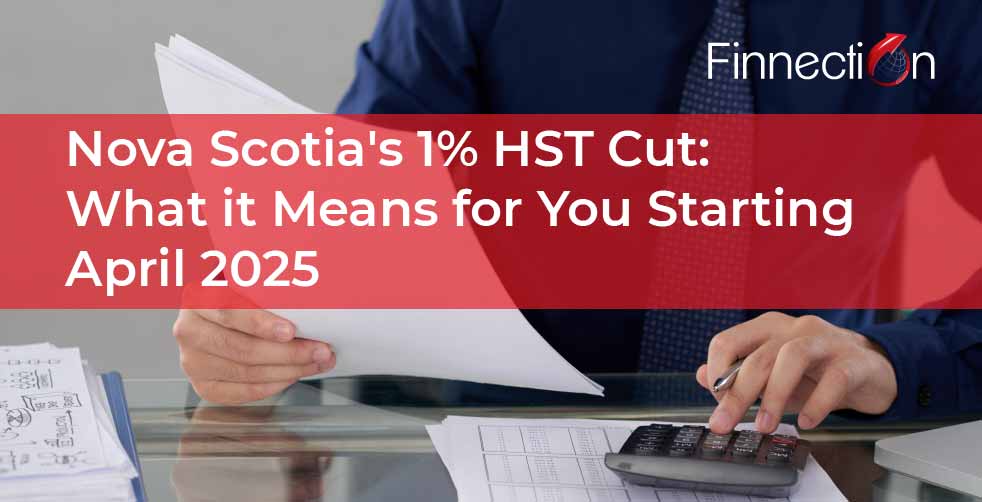In a recent announcement, Nova Scotia’s Finance and Treasury Board shared that the province will reduce its Harmonized Sales Tax (HST) rate from 10% to 9% starting April 1, 2025. This means the combined HST, including the federal Goods and Services Tax (GST) of 5%, will drop from 15% to 14%. This 1% reduction could have a noticeable impact on consumer spending, household budgets, and the provincial economy.

What is HST, and How Does it Work in Nova Scotia?
In Canada, HST is a sales tax that blends the federal GST with a provincial rate, simplifying tax collection for businesses and customers in provinces that apply it. In Nova Scotia, the provincial portion is currently 10%, making the overall HST rate 15%. Starting April 2025, this will reduce to 14%, with the provincial portion going down to 9%.
HST is a significant revenue source for Nova Scotia, second only to personal income tax, and brings in around CAD $2.7 billion annually. Despite the slight reduction in rate, the government is prepared to offset the estimated revenue reduction of approximately CAD $260.8 million for the fiscal year 2025-26, with projections of CAD $265.5 million and CAD $272.4 million in the following years.
How This Change Affects Residents and Businesses
For Nova Scotia residents, this cut will mean slightly lower costs on goods and services subject to HST, offering some relief amid rising living costs. While a 1% reduction may seem small, it can add up for households, particularly those with larger purchases or monthly expenditures on essentials. Businesses, especially those in retail, might see a slight boost in consumer spending, as the reduced tax rate could make items more affordable.
Support for Lower-Income Households
The provincial government has assured that the reduction won’t impact the Affordable Living Tax Credit, which supports low-income residents. Eligible households will continue to receive this benefit at its current rate, which is a welcome relief to those most affected by inflation.
The Bigger Picture: Sales Tax in Canada
Canada has a layered tax system with the federal GST and either HST or provincial sales taxes (PST) in various regions. Each province’s approach reflects its economic needs and policy goals. For example, Alberta does not impose a provincial sales tax, while other provinces, like Nova Scotia, have opted for a blended HST model to streamline tax administration.
As this HST reduction approaches, both residents and businesses in Nova Scotia can look forward to modest savings and possibly a more resilient local economy.
If you have any questions regarding HST, feel free to contact finnection via email at info@finnection.ca or call us at (647) 795-5462
Disclaimer: Above information is subject to change and represent the views of the author. It is shared for educational purposes only. Readers are advised to use their own judgement and seek specific professional advice before making any decision. Finnection Inc. is not liable for any actions taken by reader based on the information shared in this article. You may consult with us before using this information for any purpose.
